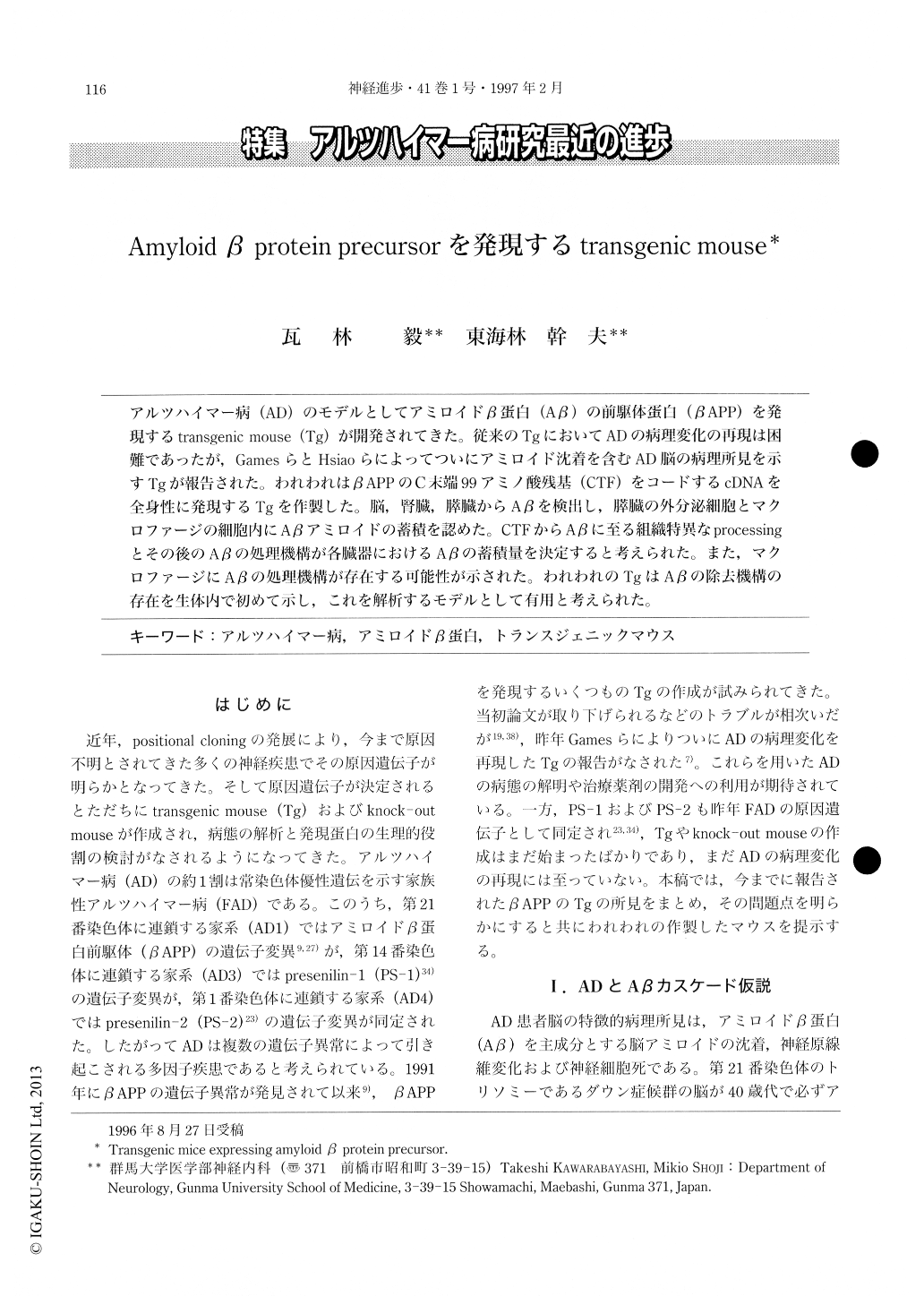Japanese
English
- 有料閲覧
- Abstract 文献概要
- 1ページ目 Look Inside
アルツハイマー病(AD)のモデルとしてアミロイドβ蛋白(Aβ)の前駆体蛋白(βAPP)を発現するtransgenic mouse(Tg)が開発されてきた。従来のTgにおいてADの病理変化の再現は困難であったが,GamesらとHsiaoらによってついにアミロイド沈着を含むAD脳の病理所見を示すTgが報告された。われわれはβAPPのC末端99アミノ酸残基(CTF)をコードするcDNAを全身性に発現するTgを作製した。脳,腎臓,膵臓からAβを検出し,膵臓の外分泌細胞とマクロファージの細胞内にAβアミロイドの蓄積を認めた。CTFからAβに至る組織特異なprocessingとその後のAβの処理機構が各臓器におけるAβの蓄積量を決定すると考えられた。また,マクロファージにAβの処理機構が存在する可能性が示された。われわれのTgはAβの除去機構の存在を生体内で初めて示し,これを解析するモデルとして有用と考えられた。
The deposition of amyloid β protein (Aβ) is an important early event in the development of Alzheimer's disease (AD). It is well established that AD1 families are cosegregated with mutant amyloid β protein precursor (βAPPs). These mutant β APPs release increased amounts of Aβ 1-40, and the highly amyloidogenic Aβ 1-42 form in transfected cells. These observations provide a powerful rationale to develop transgenic mice overproducing Aβ for animal model of AD. The results in most transgenic mice developed to model AD have been disappointing.

Copyright © 1997, Igaku-Shoin Ltd. All rights reserved.


